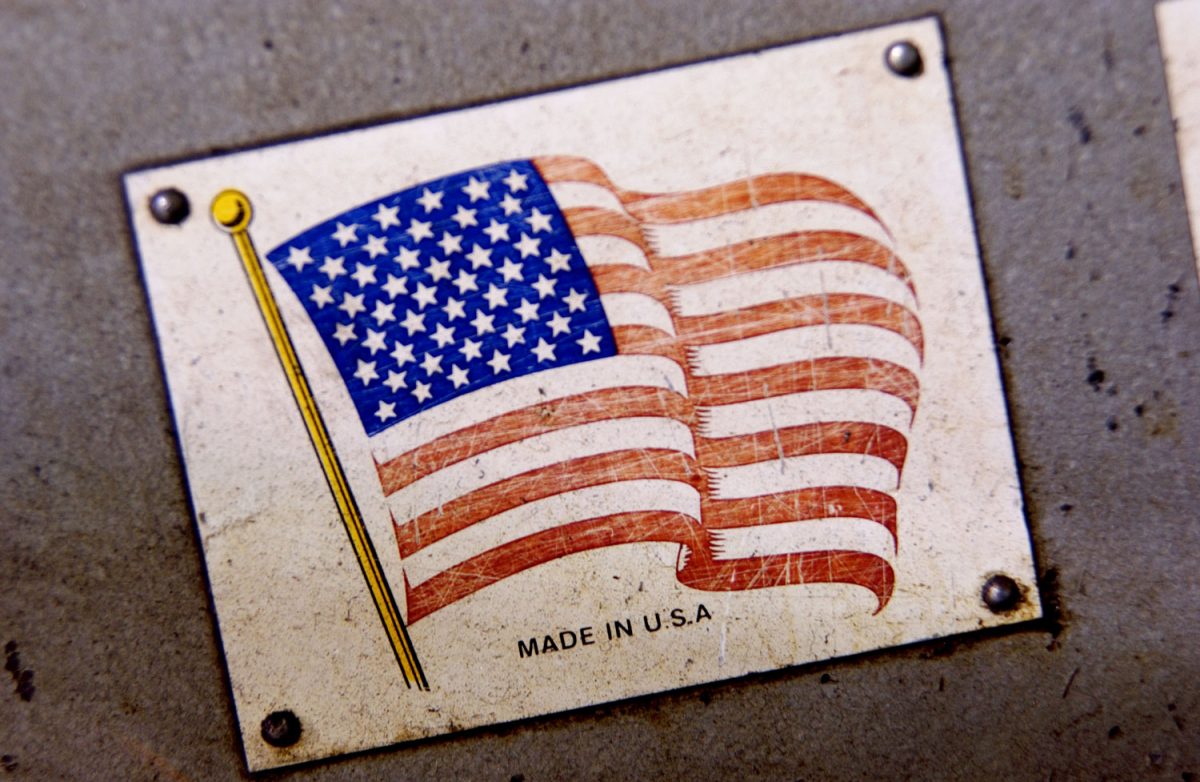MADE IN AMERICA: I want to see more products made in America
 My name is Brad Lienhart and I am co-founder of EntreDot. We are a coaching or mentoring organization located in Research Triangle Park, North Carolina. As a non-profit, we focus mostly on Main Street Business entrepreneurs who want to start a product(s) or services business or if they are a little more mature we help them with their “build capacity” strategies—scaling the business to a larger size with more complexity and employees.
My name is Brad Lienhart and I am co-founder of EntreDot. We are a coaching or mentoring organization located in Research Triangle Park, North Carolina. As a non-profit, we focus mostly on Main Street Business entrepreneurs who want to start a product(s) or services business or if they are a little more mature we help them with their “build capacity” strategies—scaling the business to a larger size with more complexity and employees.
In this article I will focus on Product Related Businesses we have helped start or scale: People come to us with a product/business idea. It’s unbelievable but sometimes they already have a provisional or issued patent. They usually have some pictures and sometimes an early alpha prototype—and at least the drawings that went into the patent if they have one. In the EntreDot SIX STEPS TO SUCCESS Process this is all happening in Step 2 Conceptualization. At this stage you are a long way from a manufacturable product—and unfortunately 10’s of thousands of dollars away.
NOW IT IS GUT CHECK TIME: So a lot of things have to happen before you move on to Step 3 Creation. Three specific actions are required to move forward: 1) do we have the $50,000-$100,000 to get to Proof of Concept and a manufacturable prototype with CAD drawings and a solid Bill of Materials (BOM), 2) do we have a US based design/engineering partner we can afford and trust to work through the Proof of Concept Issues (solid and final Proof of Concept requires proof of technical feasibility and economic feasibility), and 3) can we see how/where Proof of Concept can lead to a handoff to a US manufacturer(s) who can mold, fabricate, assemble, and fulfill orders?
Default to China, India or Taiwan: here is where many entrepreneurs just automatically default to Asia buying into the stories that tooling is cheaper, labor is cheaper, raw materials are cheaper and you just can’t beat them in the USA. I think slowly we are carving away at this myth and for the Capex benefits of going off shore there are many disadvantages that need to be quantified. Quality control looks good on paper but is it really, what is really in those cheap raw materials, these long supply lead times are killing me, return/rework at the factory is a nightmare, when currency exchange is considered is my cost really so low, and I wonder when my intellectual property will show up somewhere else in the world market. Put all of that in a hat and shake it up and I say “Design and make my products in America” even if it is a little more expensive and employ reliable American workers.
Step 3 Creation and Step 4 Evaluation = Design, Engineer, Prototype, and Build: One challenge in America is to link all these activities together in an economical sequence, without to many different parties being involves. There are numerous US companies, and even university groups, who will work out the design and engineering issues leading to CAD drawings and a bill of materials. And with the advent of various 3D printing techniques we can get an alpha prototype build which allows evaluation of form and fit. The challenge comes in the next part of the process when you want to build a true working beta prototype that you can test and build from.
Finding those bridge molders or fabricators to make the beta (manufacturable) prototype: If you are lucky you can find a smaller manufacturer with an engineering/design function that will take you through that beta process in return for an opportunity to be your product manufacturer. They are here in the US—it just takes some research and digging.
I found one for a medical exercise table in the small town of Goldston, North Carolina = company name ALOTECH, INC: A $10M contract manufacture with a very solid engineering capability, a great family work ethic, high quality standards, and a strong commitment to Made in America. They took my product from a weak alpha version to a solid beta—ready to manufacture—version and have committed to be our manufacturer when we are ready to move forward. 100% Made in America! ALOTECH is a hidden little gem but I am convinced the 100’s of ALOTECH’s spread across the United States are the beginning of a major resurrection of our Made in America manufacturing culture.
The ALOTECH model is also special in that they focus on finished prototyping, manufacturing, packaging, fulfillment, quality control (and financing these activities); while their client can focus on marketing, sales, and building a brand. It is a perfect Made in America partnership where everyone wins and makes money.
To Sum it up: American Manufacturing Value Added is twice what it was in 1990. We make $1.7 Trillion worth of manufactured goods each year—more than China, Germany, Japan or any other nation on earth. Over the last 20 years Honda, Toyota, BMW, and Nissan have invested $44 Billion in manufacturing assets in the US creating 80,000 jobs.
Domestic manufacturing accounts for 12% of the US economy, employing 12 Million workers—9% of the US workforce. Most manufacturing firms are small—99% have less than 500 employees—75% less than 20 employees. These are entrepreneurial Main Street companies.
Over the next 10 years 3.5 Million new manufacturing positions will be created in the US. As of February 2016 the average American manufacturing worker was making $25.58 per hour.
